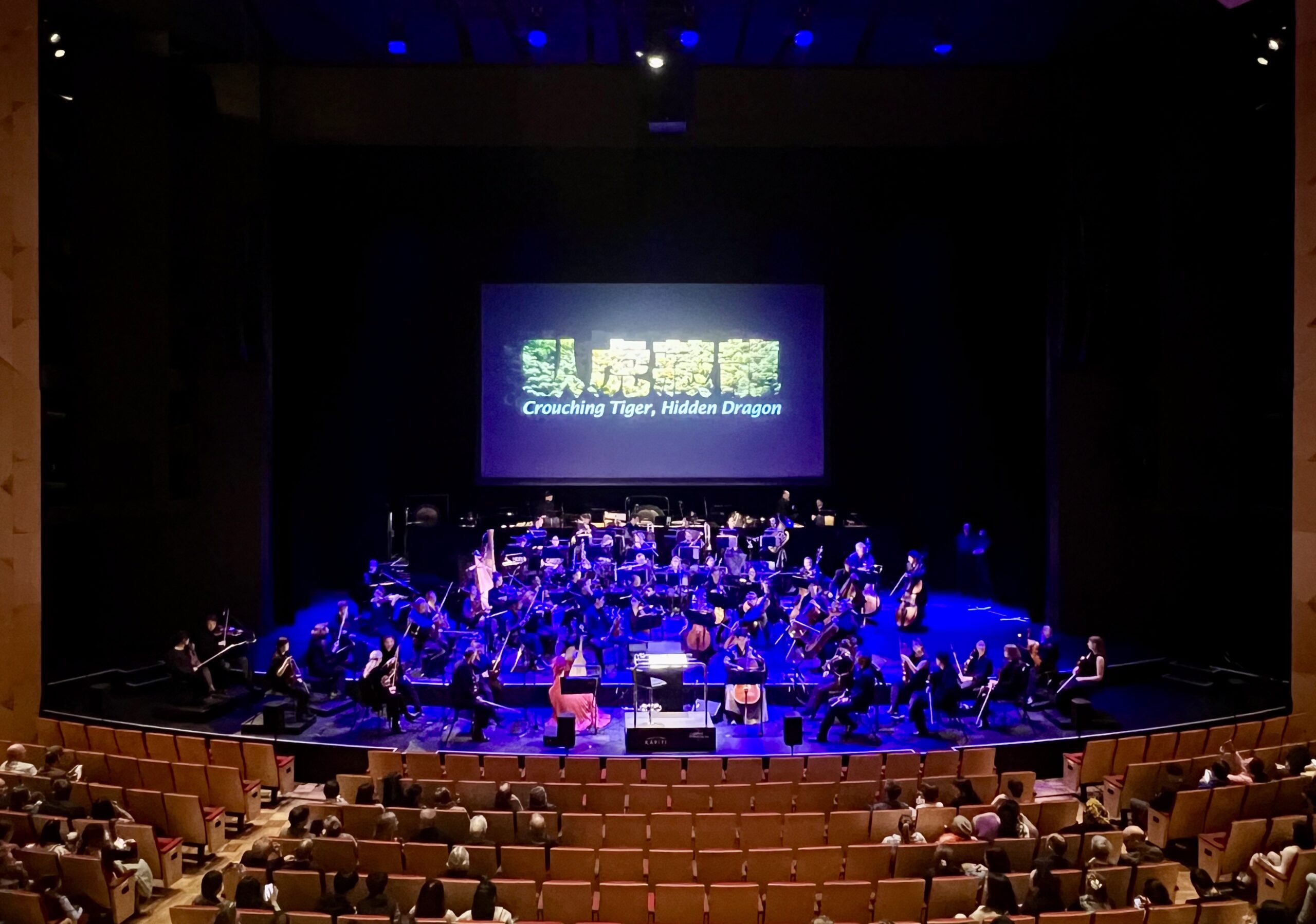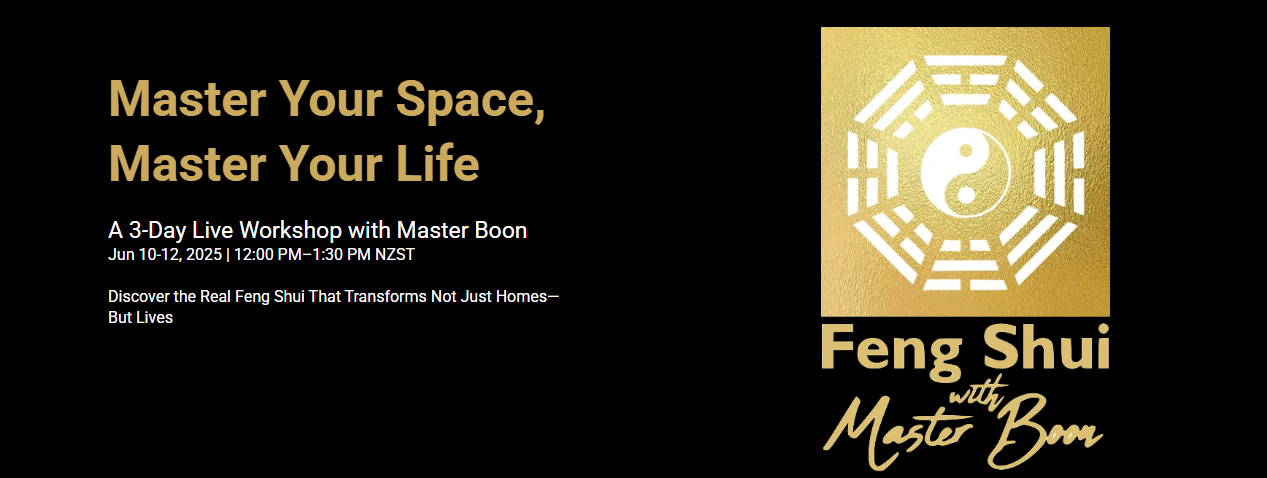A Symphony of Symbolism and Restraint
We recently immersed ourselves in a symphonic cinematic experience in Auckland, featuring Crouching Tiger, Hidden Dragon—a film that masterfully weaves together Chinese cultural values, martial arts brilliance, and evocative storytelling. This fusion of music and film took us beyond the stunning action sequences, guiding us into the depths of Chinese tradition, where duty often supersedes personal desires.
Evocative Music Score
Tan Dun’s score is an exquisite blend of traditional Chinese instruments and Western orchestral styles. The erhu, a two-stringed fiddle, provides an emotional resonance, while the pipa, a four-stringed Chinese lute, adds to the film’s evocative atmosphere. This evocative soundtrack amplifies the spiritual undercurrent of the martial arts scenes, transforming them into more than action—into meditative, symbolic movements.
Cultural Significance and Themes
The film’s title, “Crouching Tiger, Hidden Dragon” (卧虎藏龙, “Wò hǔ cáng lóng”), takes inspiration from an ancient Chinese idiom. The idiom originates from a classical poem by Yu Xin, paints a vivid picture:
“暗石疑藏虎,盤根似臥龍”
(“In the shadowed boulders, one suspects a tiger is hidden; the coiled roots resemble a dragon lying in wait.”)
This metaphor reflects a fundamental cultural idea: the existence of hidden strength and untapped potential within individuals, often concealed out of modesty or necessity. In Chinese tradition, virtues like humility and restraint are highly prized, and power is something to be revealed only when necessary.
Symbolism: Tiger and Dragon
In Chinese culture, the tiger is a symbol of raw power, courage, and action. It represents strength in its purest form but crouched, it signals restraint—waiting for the right moment to strike. On the other hand, the dragon represents wisdom, spiritual mastery, and control. While the tiger’s power is visible and immediate, the dragon’s strength lies in its restraint, embodying the patience required to reach enlightenment or true mastery.
The movie’s characters embodying the Tiger and Dragon Archetypes
In the film, each character embodies this theme, grappling with the tension between duty and desire, and the decision of whether to reveal their true abilities or keep them hidden for the greater good.
Yu Shu Lien (Michelle Yeoh) exemplifies the crouching tiger. A warrior of incredible skill, she remains bound by duty and honor. Her love for Li Mu Bai (Chow Yun-Fat) remains unspoken, hidden beneath layers of responsibility. Like the tiger waiting to pounce, her inner strength is masked by her external composure, reflecting the cultural value of restraint.
In contrast, Li Mu Bai symbolizes the hidden dragon. His martial prowess is matched by his quest for spiritual enlightenment, and his desire to transcend the life of a warrior. Yet, much like the dragon coiled beneath the surface, much of his emotional and spiritual potential remains untapped—particularly in his unspoken love for Yu Shu Lien and his struggles to impart his wisdom to Jen Yu.
Jen Yu (Zhang Ziyi) represents the duality of tiger and dragon. As a rebellious aristocrat with unmatched martial skills, she channels the untamed power of the tiger. At the same time, her desire for freedom and wisdom mirrors the dragon’s pursuit of higher understanding. Her struggle against societal expectations and her personal desires is a key theme, as she battles between a life of duty and one of autonomy.
Lo (Dark Cloud) (Chang Chen), a desert bandit, embodies the wild, untamed tiger. His free-spirited nature and passion appeal to Jen, representing the allure of a life unbound by tradition. His presence disrupts her aristocratic life, much like the tiger that moves swiftly and decisively when unleashed.
Ultimate Mastery
Crouching Tiger, Hidden Dragon is not just a cinematic marvel; it offers a profound reflection on the nature of strength and restraint. The characters teach us that true mastery lies in knowing when to reveal our hidden potential and when to hold back, reminding us of the importance of balancing power with humility in our own lives. As we navigate our journeys, let us honor both the tiger’s courage and the dragon’s wisdom, embodying the best of both worlds.
About the Movie
Based on a novel Crane-Iron by Chinese author Wang Dulu that revolve around themes of martial arts, love, and honour. The movie was most notable in film history for being the first foreign-language film to achieve major commercial success in the U.S. It is historically significant for introducing Chinese martial arts cinema, to a global audience, while blending traditional Chinese values, philosophy, and aesthetics with universally relatable themes of love, duty, and desire. The film’s elegant fight choreography, and its deep cultural symbolism rooted in Chinese mythology and philosophy, showcased the richness of Chinese storytelling in a way that had never been seen before by international audiences.
The title comes from a Chinese idiom 卧虎藏龙 (Wò hǔ cáng lóng) that translates to “Crouching Tiger, Hidden Dragon” and originates from ancient Chinese classical poem by Yu Xin. The phrase conveys the idea of hidden talent or potential—suggesting that people or things that appear ordinary on the surface might actually possess great strength, skill, or wisdom.
- 卧虎 (Wò hǔ) literally means “crouching tiger,” symbolizing power and strength that is hidden, waiting to emerge.
- 藏龙 (Cáng lóng) means “hidden dragon,” representing wisdom and skill that is not easily seen or revealed.
Together, the phrase refers to people with great abilities who remain humble, concealing their talents or strength until the right moment arises. In Chinese culture, this reflects the virtues of modesty and self-restraint, highlighting the importance of not showing off one’s full potential until necessary.
In broader use, the idiom can also describe a situation where latent power or danger is present beneath a calm surface, waiting to be unleashed.
Master Boon 🌈💜






